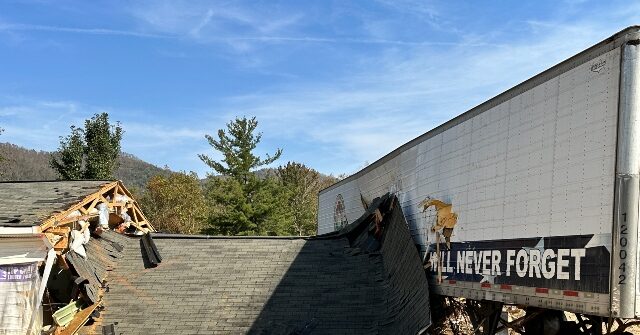Swannanoa, North Carolina, finds itself engulfed in a haunting stillness, two weeks post-Hurricane Helene. The aftermath of the disaster is starkly visible across the small town, where mud-covered vehicles lay abandoned along highways, reminiscent of lifeless remnants. A local church stands serenely amidst the destruction, its roof partially caved in, emphasizing the extent of the devastation. Homes have suffered significant damage, with crumbled walls revealing intimate glimpses of lives once lived — turned-over furniture and a soiled stuffed animal hint at the chaos and despair that followed the storm. The infrastructure bears deep scars, with mangled power lines stretching over properties that remain without electricity or running water. Roads have been washed away, isolating residents who are unable to retrieve essential supplies, thus significantly affecting their recovery efforts.
Despite the gravity of the situation, the reconstruction efforts in Swannanoa seem almost non-existent. The community has been severely impacted, yet many residents are choosing to stay, facing the elements in makeshift living arrangements such as tents along the riverside or in parking lots. This choice reflects not merely a struggle against the immediate aftermath of Hurricane Helene, but also a poignant attachment to their homes and the community, despite the pervasive sense of loss and disarray. With winter fast approaching, the urgency for basic supplies, such as propane tanks and generators, is particularly pronounced, expressing a dire need for adequate shelter and warmth as temperatures drop.
Citizen volunteers have emerged as the backbone of relief efforts in Swannanoa, establishing numerous collection sites dedicated to distributing donated goods. These volunteer-led hubs serve as lifelines for survivors searching for essential resources like water and pet food. The community’s resilience shines through as they band together to support one another amidst such overwhelming adversity. However, the coming winter looms large over these efforts, adding pressure to procure adequate supplies for warmth and basic living conditions, which risks further complicating the lives of those already grappling with loss.
Hurricane Helene, having made landfall on September 27 as a Category 4 storm in Florida, escalated into a national disaster as it swept through Georgia and ultimately devastated the mountains of western North Carolina. The sheer impact of the storm has marked it as the deadliest to strike the United States since Hurricane Katrina, with at least 95 fatalities confirmed in North Carolina alone. This harrowing statistic underscores the storm’s pervasive reach, as more than 1,000 individuals remain unaccounted for, reflecting the ongoing, traumatic reality faced by the survivors and the search teams.
A palpable sentiment looms among the volunteers that national media attention has quickly faded, almost as swiftly as the storm itself. This feeling of abandonment emphasizes the ongoing struggles of the community, which remain unseen and unheard by the rest of the country. With the complexities of recovery and rebuilding set against the backdrop of a town devastated, the residents of Swannanoa strive to remember their losses while remaining hopeful for the future. Amidst the flood of chaos, a pressing truth emerges—the journey toward reconstruction not only requires tangible resources but also a collective acknowledgment of the profound human distress and resilience intertwined in this small town’s narrative.
As months stretch into years of rebuilding efforts, the path to recovery promises to be long and arduous for Swannanoa and its residents. The struggles encapsulated in the wake of Hurricane Helene serve as a reminder of the tenacity of communities in their darkest hours, offering glimpses of hope and solidarity amid rampant despair. The continued support from volunteers and a commitment to rebuilding will shape the recovery journey, emphasizing the crucial need to foster community ties and resilience in the face of adversity. As winter approaches, the enduring spirit of Swannanoa shines, not unlike the flickering lights that will eventually return to their homes—a testament to the community’s unwavering strength in adversity.

